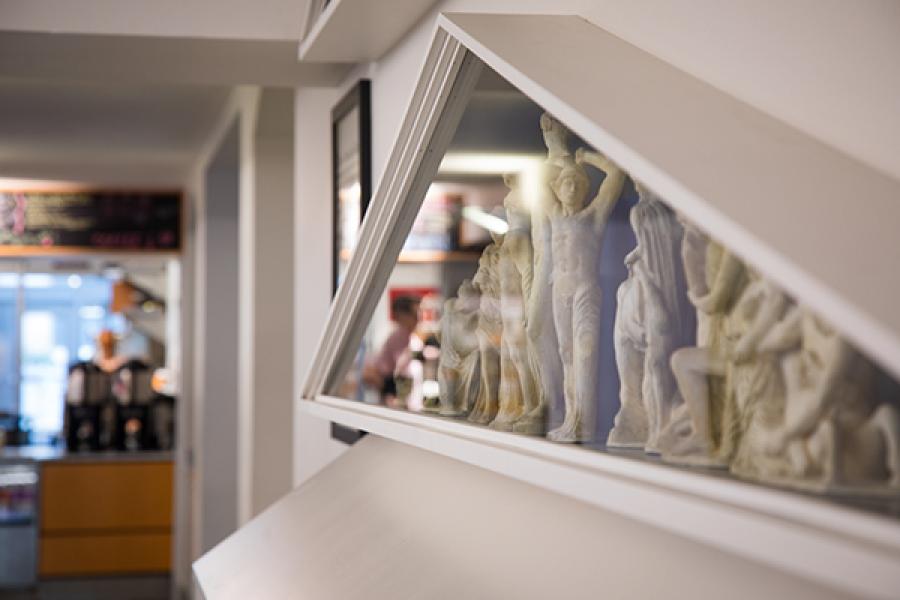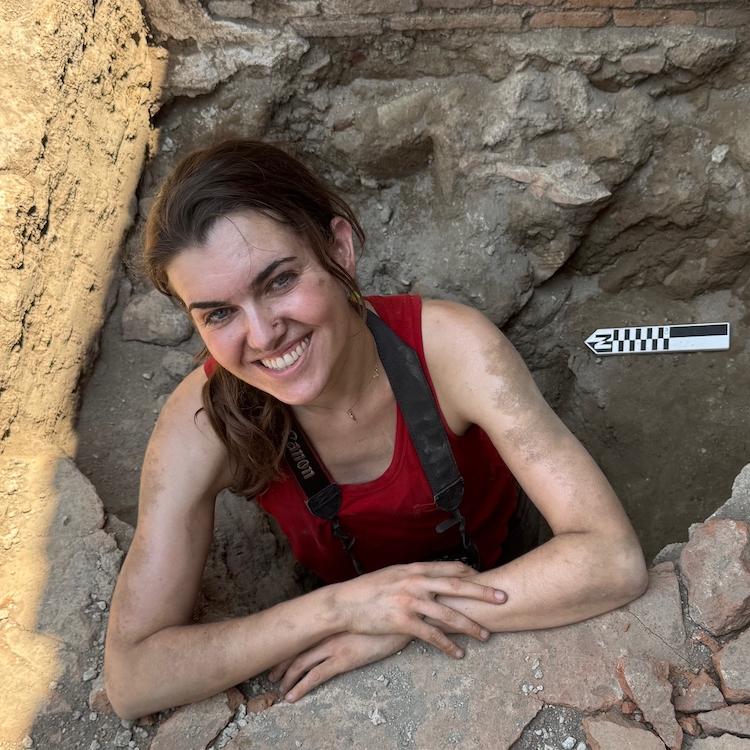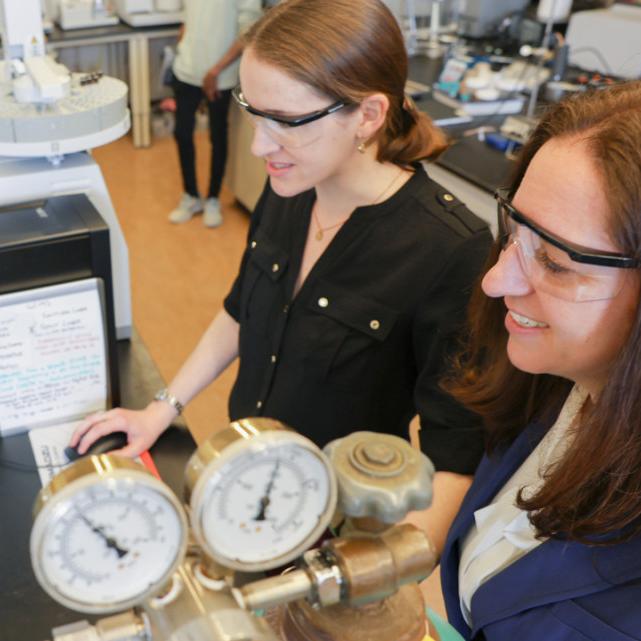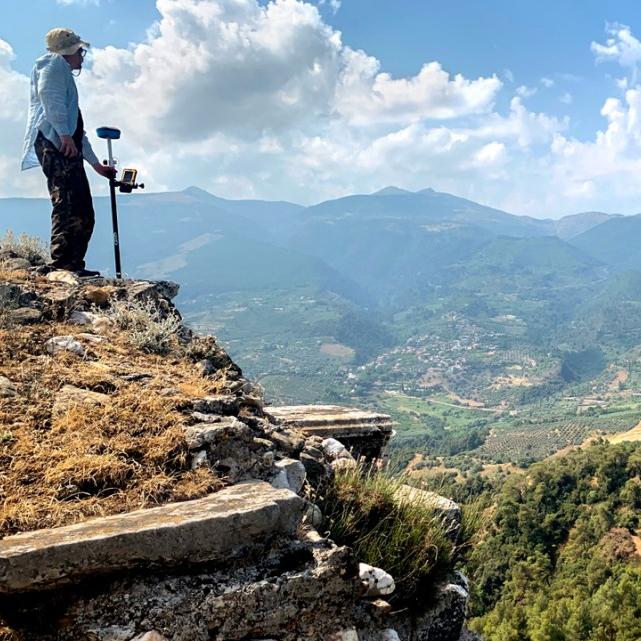Looking at the two rows of miniature plaster casts now watching over diners in Klarman Hall’s Temple of Zeus, you’ll notice a few of the figures are missing. But never fear, art detective Annetta Alexandridis (also known as an associate professor of history of art and of classics) is on the case.
The casts — miniature replicas of the East and West pediments from the Temple of Zeus in Olympia, Greece — were installed in the restaurant’s dining area in late March. Their display is part of a larger salvage and restoration project of Cornell’s cast collection Alexandridis started over 10 years ago and which she is co-curating with Verity Platt, professor of classics and history of art.
Since its early years, Cornell has owned a collection of plaster casts of sculptures, gemstones and inscriptions from different cultures and periods, used for teaching and scholarship. That collection was expanded substantially in the 1890s as a result of the combined efforts of Andrew Dickson White and the University's first classical archaeologist Alfred Emerson, who purchased plaster cast replicas from European museums and American cast companies.
Many of the casts of objects from the ancient world were initially put on display in McGraw Hall and subsequently were moved to then newly built Goldwin Smith Hall where they constituted the Museum of Archaeology. Later in the 20th century, as casts went out of fashion and space was needed for new offices and lecture halls, most of Cornell’s plaster replicas were dispersed, discarded or destroyed. Alexandridis and Verity Platt, also a professor of classics, began a long-term project to restore, catalogue and re-evaluate the cast collection. A number of larger casts can now be seen in Klarman Hall (installation curated by Verity Platt), as well as the Arts & Sciences Career Development office at 172 Goldwin Smith (part of the West pediment of the temple of Zeus in original size), Lincoln Hall, Sibley Hall and other campus locations. (The full list is here.)
Assembling of the miniature pediment casts started when Alexandridis discovered one piece – a set of chariot horses — at a College of Arts & Sciences warehouse outside of Ithaca (where most of the university’s cast collection still resides, in bad condition).She realized it must be part of a set, when she saw other miniature figures on shelves in the Registrar’s offices. So she began searching around for the rest.
“I knew that the casts had been distributed around offices here,” she said. “So I went into the Registrar’s offices, saw that people had these on their shelves and realized these were miniatures of these pediments.” So, the work began to find the rest.
She started by sending an email to everyone in the college asking if they had a cast, then investigating fellow faculty members’ offices.
“At one point, I thought it would be helpful if I could go undercover as a member of the cleaning staff at night,” Alexandridis said of her reconnaissance work, often done when faculty offices were empty (with some help from sympathetic staff.) She discovered many a statue decorated with a hat, sunglasses or a feather boa, she said with a laugh (and a shudder).
But she didn’t have a hard time convincing faculty and staff to return the miniature figures of the Olympia pediments – “they were meant for the students to use, actually,” she said. Yet, several figures are still missing – six pieces from the East pediment and four from the West. She thinks they might have made their way home with retiring faculty or are squirreled away in an office she hasn’t yet discovered.
She and Platt still welcome their return, no questions asked. Email them at aa376@cornell.edu or vjp33@cornell.edu.
In cases designed by Henry Crans, Arts & Sciences director of facilities, and built by Cornell carpenters, the figures – which were cleaned and conserved by Kasia Maroney — tell different stories.
First, they relate to their ancient model, the pediments of the Temple of Zeus at Olympia. The East pediment depicts Zeus in the center, along with Pelops and Hippodamia and other figures that tell the foundational myth of the first Olympic games. The Western pediment shows Apollo in the center trying to calm down a battle between the Lapiths and the Centaurs, mythical tribes of Greece.
Second, they are an important element of the history of archaeology when casts served as a sort of textbook or excavation report in 3D. Andrew Dixon White and his contemporaries considered cast collections a ”laboratory” for teaching and research.
Third and most importantly, the Olympia casts are a famous part of Cornell’s history. When most parts of the cast collection were removed, the West pediment of the Temple of Zeus in original size remained in place to become the name sake for the Temple of Zeus café (now Kaufmann auditorium). Now in its third iteration, the café honors its eponymous heroes with the display of the Olympia miniatures.
“These casts go back to one model, but the moment they are released from the mold, they take on their own lives,” Alexandridis said. “Each of them, on the one hand, has a connection to the past, but also a completely different history of what happened to them.”







